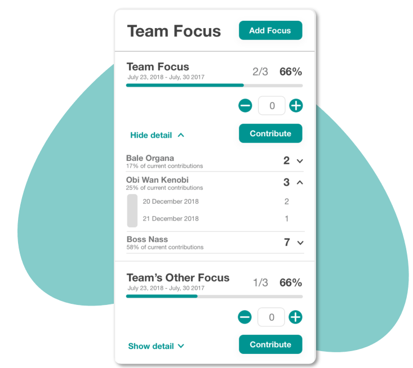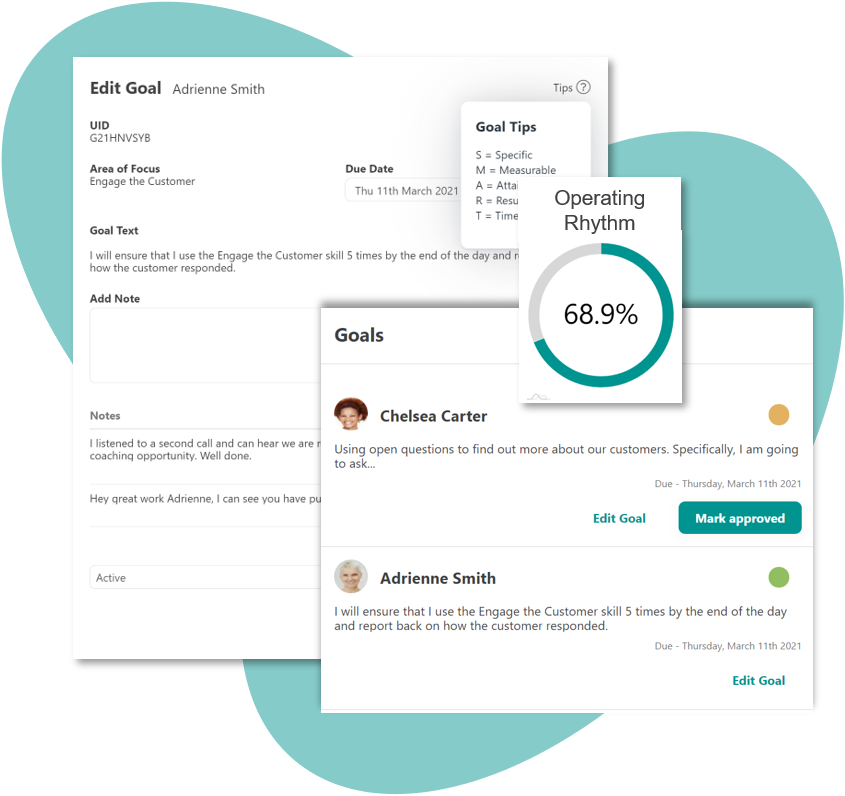Unlocking the power of employee performance coaching: Strategies for success

Here at YakTrak we talk a lot about the power of employee coaching to lift capability and empower employees. Unlocking the potential of your employees, while on the job, helps your employees grow and drives sustainable organisational success. In today’s blog post, we’re going to focus on employee performance coaching and the strategies and components that make a successful employee performance coaching program.
We’ll explore the role of managers, key components of successful programs, overcoming challenges, integrating technology, measuring impact, building a coaching culture, tailoring coaching to employee needs and best practices for effective coaching conversations. Get ready to transform your organisation and unleash the full potential of your employees.
What is employee performance coaching?
Employee performance coaching helps individuals (or teams) understand their strengths and development areas, and equips them to meet agreed goals to help them deliver their best.
It involves setting clear objectives, regular feedback and encouragement from a coach, and getting support to develop skills, but its aim isn’t to just close a capability gap. The aim is to help employees realise their full potential in a role and within an organisation. It helps employees identify and utilise their strengths to optimise performance while providing support to help them achieve their potential. A performance coach plays a crucial role in facilitating this process.
Employee coaching, more generally, is focused on improving job-specific skills and is great for helping to close capability gaps. It is usually delivered on the job and is connected to the daily operational reality of an organisation. It promotes continuous learning through regular coaching conversations, goal setting and tracking. This makes it a powerful tool helping employees master new skills and change patterns of behaviour through regular interactions with their (manager) coach.
Employee performance coaching can be seen as a subset of employee coaching, with a focus on enhancing an employee’s performance within the context of the organisation.
The role of manager as coach
Managers play a pivotal role as coaches, helping employees identify development areas and developing skills.
When coaching for performance, an employee can be coached by their direct manager or another manager within the organisation, while coaching to close capability gaps and improve role-specific skills and behaviours is generally done with an employee’s direct manager.
Team leaders and managers at all levels of an organisation play a significant role in coaching employees and driving a coaching culture – which is integral to ongoing success:
- Leaders play a crucial role in implementing employee development programs and supporting successful coaching programs by demonstrating their support of the process.
- Mid-level managers and team leaders prioritise and commit to regular coaching.
Encouraging frequent coaching conversations is crucial. Coaches should lock in regular times to check in with their team members and block out time to prepare for team coaching sessions. Adopting this approach across an organisation helps to develop the coaching mindset and expectations regarding taking time to coach.
Coaching the coach is important too. Empower your leaders and mid-level managers by ensuring they have the coaching skills they need.
Key components of a successful performance coaching program
A successful program includes three essential elements: goal setting, constructive feedback and continuous support. Each of these components plays a vital role in ensuring employees stay on track and achieve their objectives.
Goal setting
Goal setting allows employees and coaches to define clear objectives and maintain focus on what they want to achieve. When coaching for performance, goals should help provide:
- motivation
- focus
- clarity
Goals also provide a tool to help measure and evaluate progress, and facilitate accountability.
By setting clear and specific goals, individuals can concentrate on behaviours and activities that will lead to desired outcomes, make better decisions, track progress and take ownership of their actions. Challenging goals, within a performance context, can encourage individuals to stretch their abilities.
While defining performance goals, consider:
- timelines
- measurability
- attainability
- alignment with organisational context.
Constructive feedback
Constructive feedback is critical when coaching for performance (and all employee coaching).
In addition to feedback from a coach, along with self-reflection, constructive feedback from external sources can help to reach performance goals. This can be done through tools like 360-degree feedback, where feedback is gathered from multiple sources such as peers, managers and team members to provide a comprehensive view of an employee’s performance and behaviours. A 360, when done as part of a supportive, coach-led environment, can help employees gain valuable insights into their strengths and areas for improvement.
Continuous support
Continuous support is an important part of employee coaching, helping employees stay on track and reach their objectives. Performance coaches can provide continuous support by:
- checking in with employees on progress
- holding follow-up meetings
- maintaining an open-door policy
- sharing personal experiences
- seeking ways of supporting coachees through tailored development, opening networks of support and providing opportunities to test new skills.
Overcoming performance coaching challenges
Overcoming usual challenges in employee coaching, like time constraints, is important to develop an effective coaching program. Creating a culture where coaches are supported to carve out time to coach is crucial in jumping over this particular hurdle.
If a coaching for performance program is new, leaders may need to manage anxieties and reassure employees of the benefits of performance coaching. If a program is being introduced to support new standards of performance, clear expectations should be established and the workforce offered appropriate training and professional development opportunities. Employees performing at the desired levels should be recognised for meeting or exceeding expectations.
Coaching works when it’s consistent. An erratic approach with infrequent coaching conversations will result in a loss of momentum. To achieve maximum benefit, sessions need to be held consistently and planned in advance.
One of the most common challenges relates to goal setting. We can’t emphasise this enough – ensure that you identify and agree on appropriate goals. And don’t focus on too many goals at once!

Integrating technology – like YakTrak
Coaching software can optimise the coaching process, helping to improve communication, provide visibility and insights to coaches, employees and management, facilitate coaching sessions and track progress.
Software, like YakTrak, can help by:
• automating tasks such as scheduling check-ins, making life easier for coaches and coachees
• providing a platform for tracking performance, setting goals and providing continuous feedback
• collecting data on one dashboard for visibility and insights
• ensuring teams can access real-time feedback
• simplifying document management and improving processes.
Embracing technology leads to great employee development outcomes, better employee engagement, and overall improved business performance.

Measuring the impact
Assessing the effect of performance coaching isn’t just about assessing how it’s improved performance with one employee. It is important for companies to understand where their investment in employee development is paying off and to be able to pinpoint areas requiring improvement in their coaching strategies.
Regularly assessing the performance of the coaching will help businesses understand where to celebrate successes and where to adjust programs.
To assess the effectiveness of employee performance coaching programs, organisations can employ metrics such as:
- improved team performance
- promotion rates
- innovation levels
- employee engagement and job satisfaction ratings
- improved employee retention rates.
By measuring the impact of coaching, organisations can ensure that their coaching programs are effective, targeted and adding value to individuals and the whole organisation.
Tailoring performance coaching to meet individual needs
Customising performance coaching to cater to the needs of the employee is central to maximising performance. Employees have varying needs based on their current skillset, making it essential to tailor programs based on people’s unique strengths. Performance coaching isn’t just about closing a capability gap, it’s about improving an organisation’s capacity by improving the skillset of its current workforce. Tap into the pool to get the benefits out of this type of coaching.
Assess individual employees using:
- performance evaluations
- analyses of job performance data
- self-reflection
- input from managers and peers.
Aligning performance coaching techniques to the employee’s learning style will also improve coaching engagement. By tailoring performance coaching to different employee needs, coaches can ensure that each individual receives the support and guidance they need to thrive in their roles.

Effective performance coaching conversations
Performance coaching provides an opportunity to develop employees in ways that will deliver real, ongoing results. It relies on open and effective conversations, so work with your employees to define the outcomes you are looking for, keep the focus on the goal, set enough time aside and be present and engaged.
Spend time preparing for the session – consider the goals, progress and outcomes of earlier conversations. Performance coaching works when you have researched questions to ask.
Make sure your employees see coaching sessions as something that’s there to help them. Coaches shouldn’t be doing most of the talking.
Adopting best practices can result in more impactful performance coaching sessions. Some recommended practices include:
- listening intently and reflecting back
- remaining curious while avoiding imposing one’s opinion
- phrasing statements positively and acknowledging efforts
- using open-ended questions to encourage discussion and reflection.
Effective communication skills play a significant role in performance coaching conversations, facilitating the establishment of rapport and trust between coaches and employees, and creating a secure and supportive atmosphere for growth and development.
Ready to power up employee performance?
Performance coaching – and on-the-job coaching – helps everyone
Whether you’re training for longer-term performance or seeking to improve on-the-job capabilities, coaching works!
The 70:20:10 principle states that 70% of employee capability is learned on the job, 20% is learned from peers and leaders, and 10% is learned from formal training programs. This makes coaching a sure-fire way to ensure that employees are learning the skills they need, where they need them – at work!
Performance coaching helps keep high-achieving staff and succession planning.
Coaching programs provide you with an opportunity to check in with your employees:
- What is their focus?
- Can they identify success?
- Do they know what ‘high performance’ looks like?
- Have they recognised the areas they need to work on to build capability, achieve high performance in their current role, or to get to their next step?
A coaching program gives you the opportunity to track employee progress first-hand and provide immediate feedback.
How YakTrak can help
YakTrak provides the framework to hold regular coaching conversations, keep track of employee goals, report on progress and identify capability gaps or performance goals.
YakTrak’s employee coaching software can help get your employee coaching program on track:
- Replicate any coaching or conversation methodology with YakTrak’s forms so language is familiar for team members. Easily create and track individual and team goals with a traffic-light system that keeps everyone accountable.
- Never miss a coaching session again with in-app and email notifications.
- Pinpoint the behaviours that require development and learning interventions.
- Provide team members with the opportunity to give anonymous feedback about their coaching interactions to improve coaching capability.
To get the best results out of your employee coaching activity you’ll need software that provides accountability and visibility. The platform you choose should collect the data your business needs and be simple to use. YakTrak:
- helps hold leaders at all levels accountable for coaching their people
- collects data on the quality of goals and tracks progress towards them
- includes reporting and review mechanisms that will help you understand the impact your coaching and employee development activity is having on outputs
- allows team members to be involved and engaged in the process (including providing access to notes and forms)
- provides a central location for documenting employee behaviour and performance coaching activity.
YakTrak gives you powerful visibility, provides a one-stop-shop for all your forms and documentation, is easy to implement and simple to use.
Ready to power up employee performance?
Key takeaways
We’ve explored the strategies and components that make a successful performance coaching program. As we’ve seen, performance coaching can drive organisational success, enhance employee development and transform your organisation by unlocking the full potential of your employees.
Coaching for capability building or performance relies on:
- setting effective goals
- making the space for ongoing feedback and support
- having open conversations
- tracking and monitoring individual and program progress
- creating a culture that supports coaching.
We recommend using software like YakTrak’s to help embed a coaching culture and to track and monitor coaching conversations. Get in touch with us today.
Frequently asked questions
What is performance coaching?
Performance coaching is an effective process for helping individuals grow and optimise their skills. It involves identifying strengths and gaps, and then finding ways to improve and succeed professionally.
A performance coach provides support through an ongoing process involving regular guidance and feedback.
Is performance coaching the same as performance management?
Performance coaching is an effective way to help employees increase their skillset and build on their strengths.
Traditional performance management takes a top-down approach that often focuses on an annual appraisal. It’s a model that’s used by many businesses and it appeals because of its ability to tie performance goals to an organisational strategy. It is also seemingly easy to implement – assess staff based on performance goals, set associated training objectives and quickly wrap up an often-awkward conversation. However, this traditional approach isn’t effective as an employee development tool. A once-a-year conversation misses opportunities to develop employees where it matters –on the job.
The benefit of performance coaching is that it’s ongoing and engages both coach and coachee in a program that’s not just a ‘set and forget’ exercise.
How do you coach an employee to perform better?
As anyone who has abandoned a new year’s resolution to exercise more, eat better, or learn a new language knows, changing habits is hard.
But with a good coach and ongoing support, people can shift entrenched habits and learn new skills.
Sticking with a new program can be difficult but there are proven ways to improve performance and lift capability.
With traditional performance development programs most of the focus happens outside of the everyday work experience. And without dedicated support and focus on development, people can quickly forget about both the goals and their training.
But, by keeping the focus on the behaviours where they matter – on the job – you can set people up for success. To effectively coach employees to lift capability, you should provide regular and frequent feedback, set SMART goals and support them to reach one attainable goal at a time. Encourage your employees to learn from each other, interact, and share their skills and methods. Praise achievements and explain why changes and developments are important.
What is on-the-job learning?
The 70:20:10 principle shows that most of what we learn for work, we do at work. In fact, the model is based on the principle that:
- 70% of learning is done by working, such as undertaking new tasks or responsibilities, reviewing and reflecting
- 20% of learning is done through social learning, such as collaborating with colleagues, and giving and getting feedback
- 10% of learning is undertaken in a formal way, such as through courses, workshops and seminars.
By using this model, organisations can capitalise on formal training programs and see ongoing results. For example:
- team members may receive training in a new skill and then use that skill when given new responsibilities
- people can practise best behaviours in a workplace setting
- social feedback can be provided as teams collaborate on projects
- regular coaching conversations can support team members and drive behaviours.